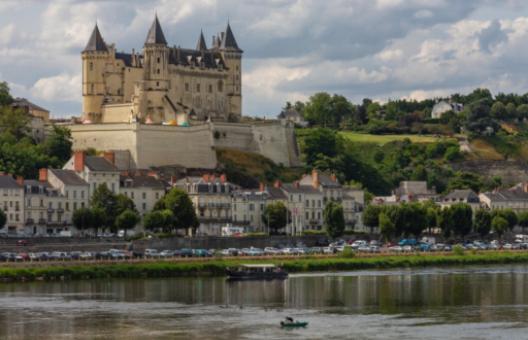The gardens and landscapes of the Loire Valley Châteaux are not only visually stunning, but also rich in history and symbolism. Influenced by the Italian Renaissance, these gardens showcase intricate designs and ornate features that have been meticulously maintained and restored over the years. In addition to their beauty, many of these landscapes also prioritize ecological sustainability practices to ensure their preservation for future generations to enjoy.

Influence of Italian Renaissance on Landscapes of Loire Valley Châteaux
The influence of the Italian Renaissance on the landscapes of the Loire Valley Châteaux can be seen in the formal garden designs and architectural elements found throughout the region. The Italian Renaissance brought a focus on symmetry, geometric shapes, and the use of perspective in design, which can be seen in the layout of the gardens and the placement of statues and fountains at Châteaux such as Château de Chambord and Château de Chenonceau. The Italian Renaissance also introduced the use of terraced gardens, which can be found at Château de Villandry, where intricate patterns of flowers and shrubs are arranged in geometric shapes on different levels of the garden. The influence of the Italian Renaissance on the landscapes of the Loire Valley Châteaux helped to create a sense of grandeur and elegance that continues to attract visitors from around the world.
Symbolism in Garden Design at Châteaux of the Loire Valley
The gardens of the Loire Valley Châteaux are not only known for their beauty and grandeur, but also for the intricate symbolism woven into their design. Each element within these gardens has a deeper meaning, reflecting the ideals and beliefs of the châteaux owners. From statues and fountains to carefully manicured hedges and pathways, every aspect of these gardens is carefully planned to convey a specific message or evoke a particular emotion. The use of symbolic elements in garden design at the Châteaux of the Loire Valley adds another layer of richness and depth to these already breathtaking landscapes.
Maintenance and Restoration of Loire Valley Châteaux Gardens
Professional gardeners work tirelessly to ensure that the landscapes remain true to their original designs, carefully tending to the various plants, flowers, and trees that adorn the grounds.
In addition to regular maintenance, many of the gardens have undergone extensive restoration efforts in recent years. These restoration projects aim to revitalize the gardens and bring them back to their former glory, often using historical documents and records to guide the process. Skilled craftsmen and landscape architects work together to recreate the intricate designs and features that were once prevalent in the gardens, ensuring that they are preserved for future generations to enjoy.
The restoration of the gardens is a labor of love, with many individuals dedicating countless hours to ensure that every detail is perfect. From intricate topiaries to sprawling flower beds, every aspect of the gardens is carefully considered and maintained to uphold their historical significance and beauty. By preserving and restoring these stunning landscapes, visitors can continue to experience the magic and majesty of the Loire Valley Châteaux gardens for years to come.
Ecological Sustainability Practices in Landscapes of the Loire Valley Châteaux
The Loire Valley is renowned for its stunning châteaux and picturesque landscapes, but these historic sites are also taking steps to ensure they are environmentally sustainable. From organic gardening practices to water conservation measures, the gardens and landscapes of the Loire Valley châteaux are embracing ecological sustainability.
One key practice adopted by many châteaux is the use of organic gardening methods. This means avoiding the use of synthetic pesticides and fertilizers, and instead opting for natural alternatives like compost and beneficial insects. By maintaining healthy soil and plants in a natural way, châteaux gardens are not only preserving the environment but also creating a healthier ecosystem for local wildlife.
Water conservation is another important aspect of ecological sustainability in the landscapes of the Loire Valley châteaux. Many châteaux have implemented water-saving techniques such as drip irrigation systems, rainwater harvesting, and the use of drought-resistant plants. By reducing water usage and minimizing runoff, these practices help to conserve this precious resource and protect the surrounding environment.
In addition to these efforts, many châteaux are working towards preserving biodiversity in their landscapes. This includes planting native species, creating wildlife habitats, and reducing the use of chemical pesticides that can harm beneficial insects and birds. By promoting a diverse range of plants and animals, châteaux gardens are contributing to the overall health of the ecosystem in the Loire Valley.
Overall, the ecological sustainability practices in the landscapes of the Loire Valley châteaux demonstrate a commitment to protecting the environment and preserving the beauty of this historic region for future generations to enjoy. By incorporating these practices into their garden design and maintenance, châteaux are not only preserving their cultural heritage but also embracing a more sustainable approach to landscaping.
